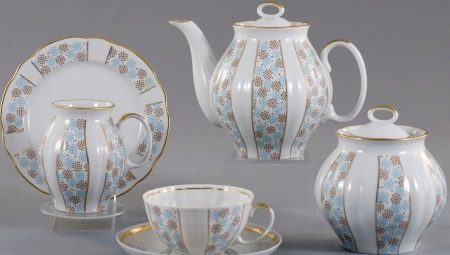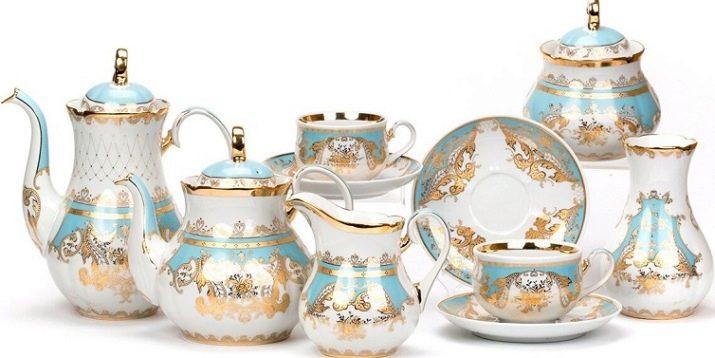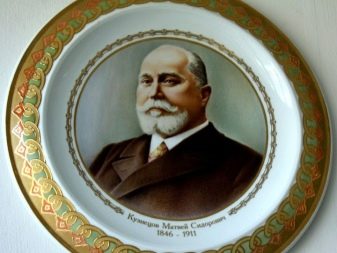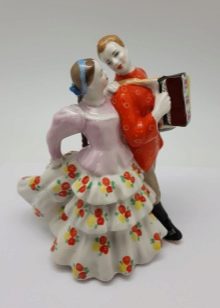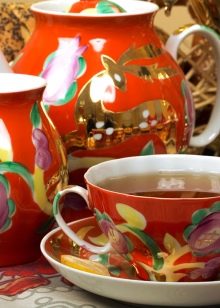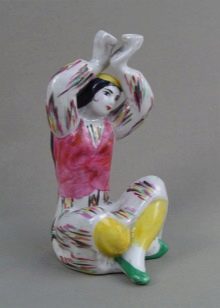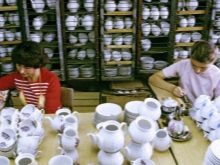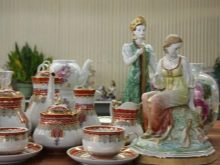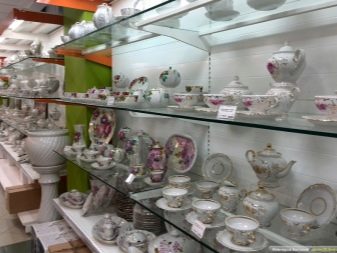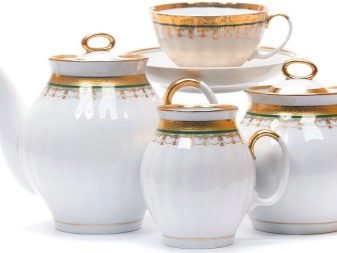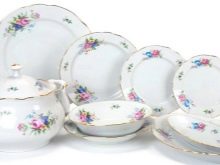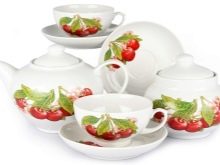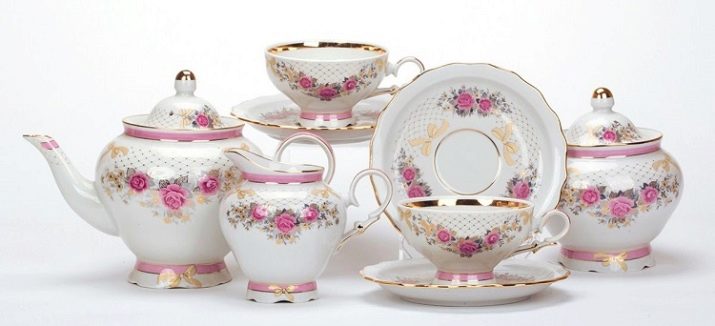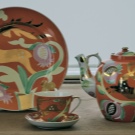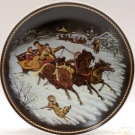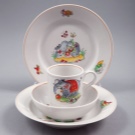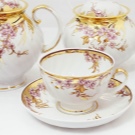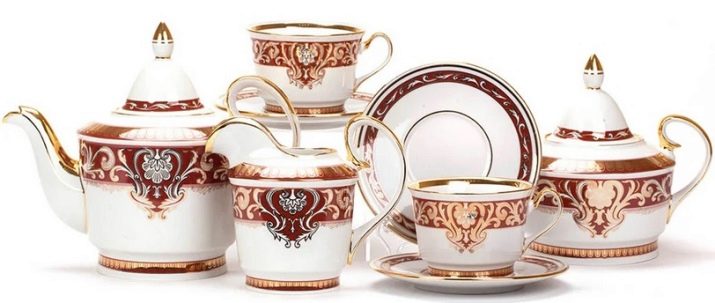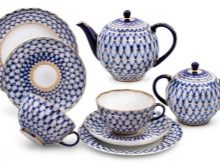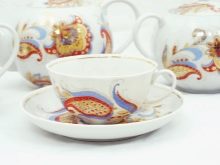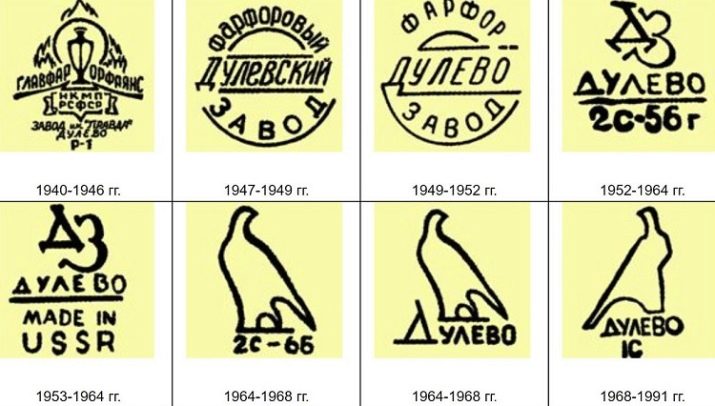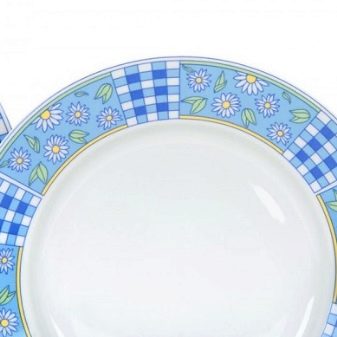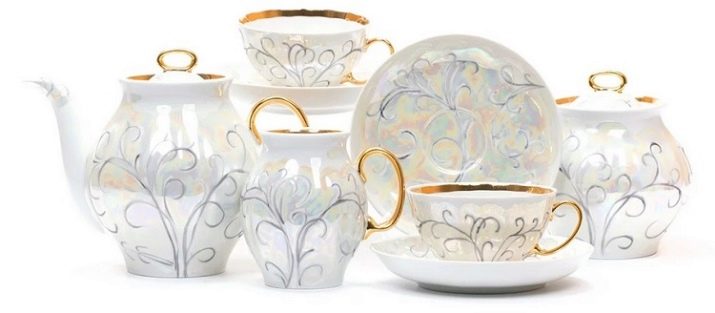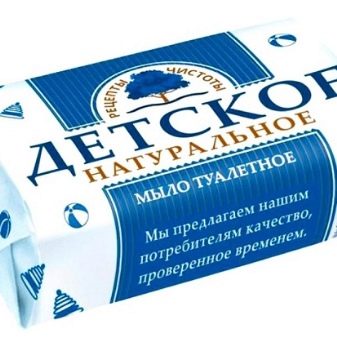Ware from metal, plastic and other modern materials can be very practical. But for its decorative qualities it is difficult to find a worthy alternative to porcelain products. They do it in our country, moreover, it is no worse than in the recognized world centers of this industry.
A bit of history
The main Russian factory specializing in faience and porcelain in various forms is the factory in Likino-Dulyovo. He releases:
- dishes;
- souvenirs;
- sculptural products.
The town of Likino-Dulyovo is located in the Moscow region, and more precisely, in the Orekhovo-Zuyevo district. The start of production took place in 1832 on the initiative of the merchant T. Ya. Kuznetsov. Then the area where the enterprise was located was called Dulyovo wasteland. The status of the city, this territory received only in 1937. But already at the first stage, the factory of porcelain in Dulevo thundered literally all over Russia.
After 20 years, it has become one of the main centers of porcelain and ceramic production in our country. Since 1864, MS Kuznetsov became the owner of the enterprise. When it manages to achieve the highest development in the XIX century. Attracted specialists and scrupulous study of the technology allowed to make products of impeccable technical characteristics. Since 1918, the company is on the next rise.
Already in the first years after nationalization, a cardinal reconstruction was under way, an adjacent factory of special paints was being created. The mechanization of all the workshops begins and ends fairly quickly. Since 1932, an art laboratory. For 15 years (1918-1932) it is possible not only to cope with the initial difficulties, but also to cut off the peak issue of 1913 by 3 times.
At this time, more than 75 million products are being made annually, whereas before the First World War they managed to bring production to only 25 million units.
But this was only the beginning of the path of the enterprise. In the 1930s, attention was paid not only to the quantity of products, but also to their artistic performance. It is possible to achieve a qualitatively new aesthetic level (which was also reflected in the exposition of the factory museum). Forever in the history of Likino-Dulyovo then entered such names as P. V. Leonov (painting), Mukhiguli and Strochilin (original forms of containers). Sculptures and small figures Sotnikova, Kozhin, Bogdanova also became a very remarkable achievement at the time.
Well-known painters and sculptors collaborated with the factory at that time. Its products were highly valued abroad, handing even the gold medals of world exhibitions. In the late 1930s, a transition to a new style of painting, expressing more emotions, is planned. For obvious reasons, the updated concept was fully realized only in the 1950s. Again it is worth noting the contribution of the legendary Leonov, and in particular, his sign set "Golden Deer".
In the 1950s, Likino-Dulyovo actively mastered the new approach - borrowing motifs from old Russian folklore and the use of classical ornaments. Preference was given to a contrasting palette of bright colors. During this period, the color range that is already familiar to modern Dulevo porcelain dominates:
- selenium;
- blue;
- green tones.
Experienced artists and sculptors continue to be involved in the collaboration. In the 1960s, another decorating trend appeared. Some decorators tried to shade white porcelain surfaces with soft pastel painting.In this approach, both golden strokes and simple geometry were used.
However, as a whole, the company, despite attempts to introduce minimalist motifs, remained loyal to Russian traditional style.
The 1970s are accompanied by the use of etudes with natural landscapes, with field plants. In 1991, the plant was privatized, and a production cooperative was formed. But in new realities, porcelain from Likino-Dulyovo is losing its former popularity. Demand for products quickly fell, and by the beginning of the 2010s, the plant dragged out a miserable existence. Only feverish efforts and accelerated reconstruction (with the abandonment of outdated and insufficiently economical equipment) made it possible to save the enterprise from complete collapse.
Simultaneously with the completion of the reconstruction, in the late autumn of 2014, the factory museum opens. It exhibits the unique works of many famous creators. Starting from 2015, the Renaissance is on, and the number of marketed products is increasing annually. True, it is unclear exactly when the previous production records will be covered. But it's time to move on to a more important topic - the assortment of porcelain.
Varieties
Likino-Dulyovo products began to be covered with special monograms and signs for quite a long time, almost from the very beginning of the existence of the plant. Even then, there were more than enough people willing to falsify popular products. What the company produces now, is realized primarily through the main brand store.
Its first floor offers visitors sets and tea pairs. You can buy a set for tea drinking for at least 700 rubles (for 6 people). The most expensive sets for the price reach 20 thousand. Porcelain lovers point out that The most popular and interesting solutions can not cost less than 3000 rubles.
What is sold for 8,000 or more, this is already a gift sets, many of them are made initially with hand-painted.
In Likino-Dulyovo do and a variety of dinner sets. There is something to choose from, and the prices are quite reasonable. The dishes on the second floor of the store are sold individually. There you can find:
- plates;
- teapots;
- salad bowls;
- cups;
- Bakeware;
- cups and glasses.
Along with the old Russian ornaments, Likino-Dulevsk designers also mastered the Uzbek style motifs. In any case, all sets and individual copies are thought out very well. So, tea set "Cherry" consists of 14 items and is designed for 6 users. As the manufacturer claims, this set fits perfectly into quiet family evenings. The colorful description and impressive realism are particularly noted in the official description.
Set "Ledum" includes the same composition and at the same time is capable of making any holiday, any romantic evening a truly idyllic time. The developers were able to ensure that he created only pleasant associations. If you do not restrict yourself to country services, then you can pay attention, for example, to “Flowering strawberries”. This kit includes:
- teapot;
- tea pair;
- sugar container.
There are in the range and isolated tea pairs. A vivid example is "Wild Rose". Also the plant in Likino-Dulyovo manufactures:
- tea and coffee sets;
- saucers;
- sugar bowls;
- kits for children;
- glasses and saucers;
- mugs;
- decorative plates;
- vases;
- shtoffs;
- lamps made of porcelain.
Advantages and disadvantages
Talk about the positive and negative sides of Dulev porcelain is appropriate to break into 2 parts. First, about porcelain in general. They are considered ideal for holidays and special occasions. When the mood is high, when there are real reasons for joy, why not take advantage of the achievement of the ceramic industry. No wonder this kind of dishes found in the most ambitious places.
Quality products are exceptionally thin and even “let the sun through”. At the same time, the mechanical strength of porcelain exceeds glass of identical thickness. But the first characteristic minus is immediately revealed - however, mechanical stability of porcelain products is lacking. And even the first-class Dulev technology that has been developed over many decades does not allow to “draw out” this drawback.
But the use of strictly natural components ensures complete safety of consumers.
As for the decor, for a long time those products that were created in Likino-Dulyovo were underestimated by experts. Even the products of other domestic factories, the same Lomonosov, in the XIX century in high circles snobbishly worn. Traditional Russian plots and motifs, stylistic decisions were declared “eerie philistinism”. But times are changing, and aristocratic snobs (like those already purely Late Soviet followers) have sunk into oblivion. But porcelain products with good hand-made patterns in traditional style survived all these violent attacks.
No wonder - the mass consumer is simply tired of the patterned patterns in the decal technique. Let them be even more diverse and sometimes more sophisticated, but there is simply no specific pleasant "soul" in them. At the same time, compared with the products of the same IKP, dulevskiy products benefit (by comparable positions) by about 50%. Or in some cases even a little more. Colors may or may not like - but this is a purely individual question.
How to choose?
Earlier all there was a stamp from the letters "ZK". It was used only from 1832 to 1840. Later (before 1860) cobalt stamps are used. Since 1864, for 25 years, the products of the company have been marked with blue overglaze marks MSC and KFM. In the next 2 decades, a completely different brand has been used. And from 1962 to this day, Likino-Dulyovo puts a graphic picture of a falcon on his china.
This practice began under the impression of the victory of the corresponding composition in 1958 at the Brussels exhibition. Knowing which logos were used as stamps by year, it is possible to date porcelain products without any problems. The very first of the stamps pressed into the dough. But when choosing it is important to pay attention not only to conventional signs.
Classic folk style like a very large number of people. If it does not fit, you can choose another technique - the so-called decal. This method of manufacture means the transfer to the porcelain images from the stencil. You should not think that all such products look lifeless - among them there are undoubtedly original ones. The third dulevskaya technique, which deserves attention, is the application of characteristic "calico" drawings.
In addition to these moments, there are other subtleties that absolutely can not be ignored. So, whenever possible, it is necessary to get ware and other products from porcelain in large specialized shops. The best of them are those that work directly from the manufacturer. Important: You should check the full name of each product and its appearance with the description on the official website. A quality product is distinguished very simply: through the wall it should be clearly visible (with sufficient illumination) the mark applied on the opposite side.
No less important is the melodic response that occurs when hitting the surface. Connoisseurs take special wooden sticks for tapping. If they hit simple pottery or faience, the sound is invariably muted. No tricks of falsifiers are able to eliminate this feature.
An important requirement is an extremely smooth and smooth layer of glaze - it is judged by how conscientious the technologists and production units were.
Care features
Simply choosing the right product is not enough.Often it already after a short time begins to upset the owners. This is due, as a rule, to illiterate treatment. Porcelain, especially painted by hand (as in this case), is also washed only by hand, without resorting to dishwashers. Even the most benign of them do not work properly. Therefore, the risk is too great that something will be damaged.
But also hand washing is very different. Categorically it is impossible to clean dulevskiy porcelain, holding it on weight under a stream of water. There is a high probability that you will have to face another identification feature of a quality material - the type of fragments. The dishes are placed in plastic containers in which soft towels are spread.
It is strictly forbidden to use boiling water or hot water. Suitable only liquid moderate temperature. If the dishes have handles or thin parts, when washing it is held by the body and below. The use of household chemicals in principle is unacceptable. The only allowed option is baby soap, although it should be thoroughly diluted in water or applied to a brush with soft hair.
Water from ammonia helps to relieve tarnished porcelain from stains and stains. Outside, the dishes are scrubbed with a weak hydrogen peroxide solution. As an alternative to it, apply diluted tooth powder.
Any rigid devices and abrasive cleaning compounds are strictly prohibited! But soft fabrics are quite suitable for wiping dry or wet methods.
To clean the spouts of kettles and other hard-to-reach areas usually use brushes designed for baby food bottles. Unlike ordinary dishes, china can not be soaked in water for a long time. Because of this, you can "finish the game" to cracks. For the same reason, it is worth avoiding strong friction during washing. Wash off soap and foam by gently pouring water at room temperature.
As soon as the porcelain is cleaned and rubbed dry, it is immediately rubbed to a shine. If this is not done, spots and stains may soon appear. And not just to appear: it will be much more difficult to cope with them than usual. Dust brushes with a non-coarse pile. Once again: all the manipulations are done as carefully and accurately as possible, without any haste.
In the next video, interesting facts about Dulevo porcelain are waiting for you.
